No one safe from weather-related disasters, says UN
September 15, 2022 · By George Lee, Environment Correspondent for www.rte.ie
No one safe from weather-related disasters, says UN
A new multi-agency report coordinated by the World Meteorological Organisation says that emission reduction pledges need to be seven times higher to prevent global warming going above 1.5C.
The United in Science report also warns that the most vulnerable populations will suffer, and cities will face increasing socio-economic impacts.
United Nations Secretary-General Antonio Guterres has said that rapidly accelerating climate disruption means that no one is safe from weather-related disasters.
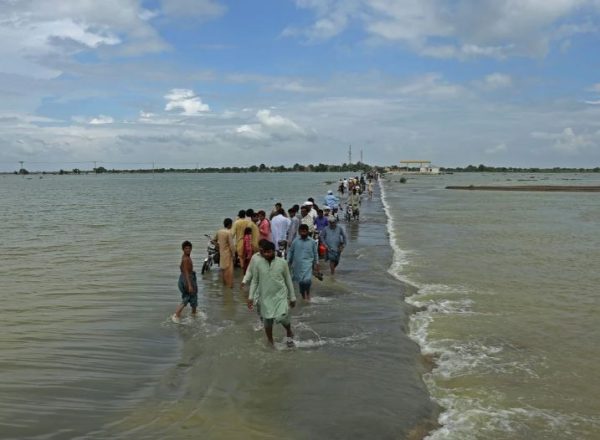
Pakistan: Homes and livelihoods destroyed by flooding
Floods, droughts, heatwaves, extreme storms and wildfires are going from bad to worse, breaking records with ever alarming frequency.
There have been heatwaves in Europe, colossal floods in Pakistan, prolonged droughts in China, the Horn of Africa and the United States – and that was just this summer alone.
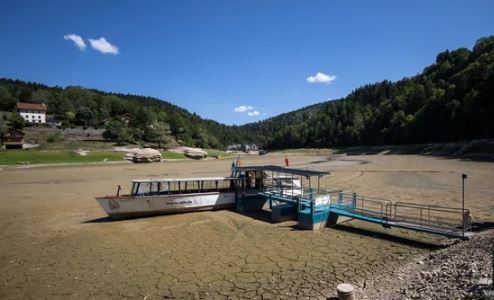
Lake Brenets on the France-Switzerland border earlier this summer
There is nothing natural about the new scale of these disasters, according to the UN Secretary-General.
Instead, he said, they are the price of humanity’s fossil fuel addiction.
Mr Guterres was commenting on the latest United in Science Report, which incorporates the latest information and scientific updates about climate from a wide range of UN Agencies and others.
The report says boldly that the world is heading in the wrong direction, and that without much more ambitious climate action, the impacts of climate change will be increasingly devastating.
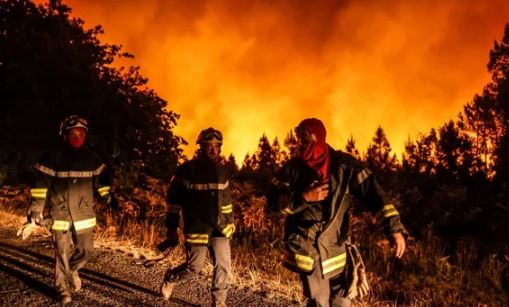
Wildfires raged in southwest France this year
It highlights that the number of weather, climate, and water-related disasters has increased by a factor of five over the past 60 years.
It says by 2050, more than 1.6 billion people living in cities will be regularly exposed to three-month average temperatures of at least 35C and this will exacerbate socioeconomic challenges and inequalities.
It also says emissions reductions pledges for 2030 need to be increased seven-fold to be in line with the 1.5C goal of the Paris agreement.
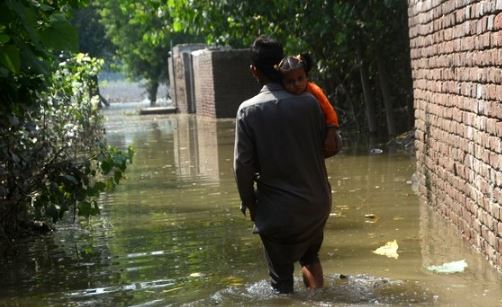
Recent flooding in Pakistan
The following are the main points from the latest United in Science Report from various UN agencies today:
- On climate change, the world is heading in the wrong direction. There is a huge gap between climate action aspirations and reality. The average global temperature last year was 1.17C above pre-industrial levels and greenhouse gas concentrations continue to rise to record highs.
- In June and July 2022, Europe was affected by two extreme heatwaves and drought. Portugal had a new July national temperature record of 47.0C, and for the first time on record, temperatures in the UK exceeded 40C. According to the World Weather Attribution initiative, human-caused climate change made the heatwave in the UK at least 10 times more likely.
- Greenhouse gas emissions in 2022 were 1.2% higher than before the pandemic in 2019. Carbon dioxide concentrations in the atmosphere reached a record 420.99 parts per million at the Mauna Loa observatory in Hawaii during May this year, and 413.37 parts per million at the Cape Grim observatory in Tasmania.
- The past seven years were the warmest on record. There is a now 48% chance of exceeding 1.5C warming in at least one of the next 5 years. And as temperatures continue to rise, “tipping points” in the climate system cannot be ruled out – such as the melting of the Greenland ice sheet or the slowing of the Atlantic warm water circulation currents.
- The number of weather, climate, and water-related disasters has increased by a factor of five over the past 50 years, causing (USD) $202 million in losses daily. Without much more ambitious action, physical and socioeconomic impacts will be increasingly devastating.
- New national mitigation pledges for 2030 would need to be four times higher to limit warming to 2C and seven times higher for 1.5C. As things stand right now, the world is heading for 2.8C of warming by the end of this century, or 2.5C if new or updated climate action pledges are fully implemented.
- Cities will face increasing socio-economic impacts from climate change and the most vulnerable populations will suffer most. About 55% of population (4.2 billion people) live in cities and they account for 70% of human-caused emissions. But cities are highly vulnerable to the devastating impacts of increased intense rainfall, rising sea-levels, coastal flooding, and extreme heat. By the 2050s, over 1.6 billion people in 970 cities will be regularly exposed to three-month average temperatures reaching at least 35C. Socioeconomic challenges and inequalities will worsen.
- Between March and May 2022, Delhi in India experienced five heatwaves with record-breaking temperatures reaching up to 49.2C with devastating socioeconomic and public health impacts. Now is the time to integrate adaptation and mitigation, coupled with sustainable development, into the ever-dynamic urban environment.
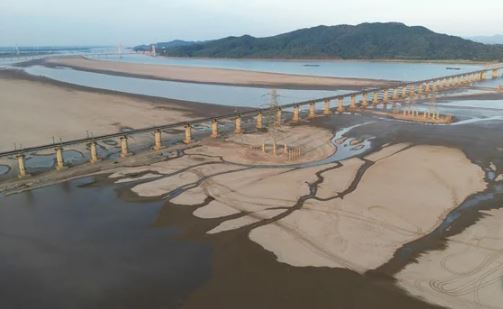
Dried up: China’s largest freshwater lake
The agencies who contributed to the report are the WMO, Global Atmosphere Watch, the World Weather Research Programme, the UN Environment Programme, the UN Office for Disaster Risk Reduction, the World Climate Research Programme, the Global Carbon Project, the UK Met Office, and the Urban Climate Change Research Network.






